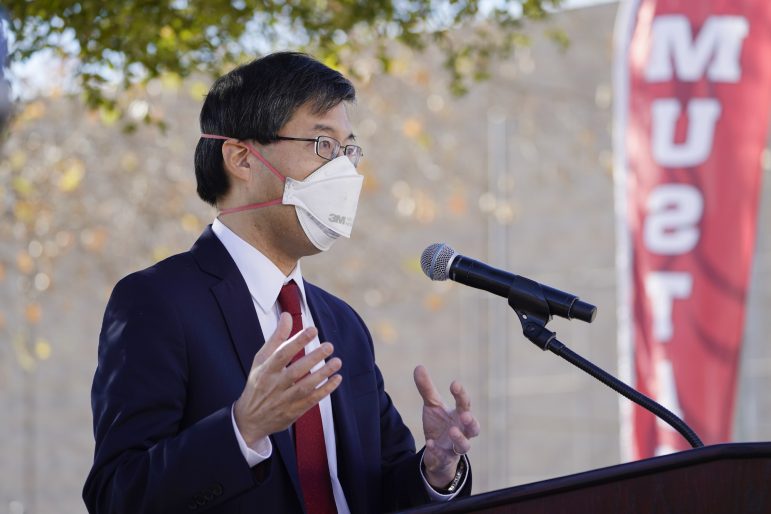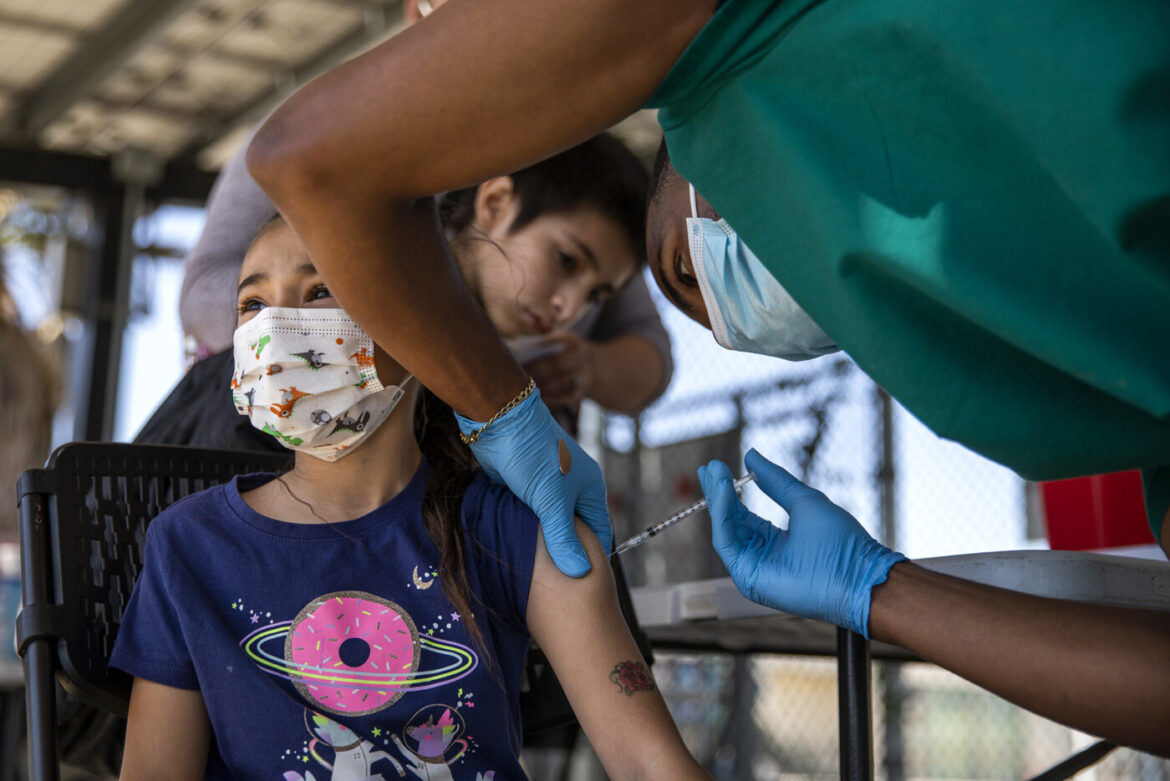Although more than three-quarters of California adults are vaccinated against COVID-19, opinions are more divided when it comes to vaccinating children. That sentiment played out Thursday when first, the author of a bill that would have mandated vaccines for all children pulled the legislation, and then again when state health officials pushed back the date of their student vaccine mandate.
It was a striking shift for a state that had been the nation’s first to announce a planned K-12 COVID-19 mandate.
The bill by Sen. Richard Pan, a Sacramento Democrat who chairs the Senate Health Committee, would have granted no personal belief exceptions to the requirement that all children get the COVID vaccine to attend school or child care. In sidelining his own bill, Pan said the focus needs to be on making sure families can access the vaccine for their children.

Within hours, the California Department of Public Health announced it will not begin the process of adding the COVID-19 vaccine to the list of mandated childhood vaccines for K-12 public and private school students because it has not been approved by the federal Food and Drug Administration. Previously the state had intended to require it for the upcoming 2022-23 school year, but now that won’t happen until at least July 1, 2023.
The health department said in a statement that even after COVID vaccines for kids receive full approval, it would also consider the recommendations of a Centers for Disease Control vaccine advisory committee and the American Academy of Pediatrics and American Academy of Family Physicians before issuing a school vaccine requirement.
Support for Pan’s bill has been wavering for several weeks. Last month, another member of the Senate Health Committee, Democratic Sen. Connie Leyva of Chino, told the group Stand Up Ontario, in the Inland Empire, that she was not going to vote for the bill.
She said she told Pan, “I just don’t think it’s the right time. We are too divided in the community,” she said. “I think this bill is too divisive.”
GOP political consultant Mike Madrid said legislators pull bills for many reasons, including a lack of support or because there is another way to reach the same goal.
“If a better way to solve it is access without the acrimony of mandate that is fine,” he said. “The point isn’t to disagree, it’s to get to a point where we have public health protections.”
Pan’s bill was one of eight aggressive COVID-19-related bills introduced as part of a slate from the Legislature’s vaccine working group, made up of Democratic legislators. Among the bills still alive in the Legislature are proposals that would punish doctors who share misinformation, require schools to continue regular COVID testing and change how the state’s vaccination registry works. Also still in play: a bill that would allow 12- to 17-year-olds to get vaccinated without parental consent.
The COVID vaccine is fully authorized for those older than 16 and can be given to children as young as 5 under an emergency authorization. It has been available since last year but the uptake has been slow. About two-thirds of 12- to 17-year-olds have been vaccinated, but the numbers are much lower for kids 5 to 11, with only about one-third vaccinated.
Citing the low COVID vaccination rate among children, Pan said a mandate is not a priority until the state can make the vaccine more accessible. He said that in his experience, as a pediatrician, when parents ask about vaccinations they want to see their child’s doctor. But most doctor’s offices don’t offer the vaccine for COVID-19 and are referring families to drug stores or vaccination sites that are not child-centric.
“The challenge is that we are not getting vaccines into essentially the places where people normally get vaccines for their children,” he said, referring to pediatricians’ offices. “We still have a long way to go.”
A Berkeley IGS poll released in late February found that two-thirds of California voters supported requiring the COVID-19 vaccine for K-12 students. But there is a big split along party lines: Democrats and liberals overwhelmingly support a mandate while only about a quarter of conservatives and Republicans do.
Among parents, two-thirds said they felt having their kids vaccinated was essential or important, while 26% percent said it was “either not too or not at all important.” This question did not address the mandate.
Pan’s was the second of the working group’s bills to be sidelined by its author. A proposal to require all people who work, including contractors, to be vaccinated was also pulled.

Critics have been pushing back, arguing that the bills are burdensome and infringe on health and privacy rights — and no bill was more controversial than Pan’s. Many parents who opposed it said that parents should get to choose whether to vaccinate their children, especially when the vaccine does not fully prevent transmission and it’s still unclear how long it is effective.
“We did not feel it was the appropriate policy for children with respect to COVID-19 at this time,” said Christina Hildebrand, head of A Voice for Choice. The group advocates for parental choice and has worked since 2015 to keep personal belief exemptions for various vaccines in place. She points to the low rate of COVID vaccination among 5- to 11-year-olds as a reason to hold off on a mandate.
“Those parents have had ample opportunity to get their children vaccinated but the parents are hesitant,” she said.
Pan said it’s difficult to require something that two-thirds of young children have yet to receive. “Mandates are good at getting you to that final bit when we are at 80 percent and have to get to 90, not when you are below half,” he said. “If you are that far behind there’s a reason. Some of it is people have questions and want to get them answered, and they want to hear from the person they have been going to for a long time to get vaccinated.”
Madrid said the bills signal the possibility of future vaccine mandates as the world becomes more globalized and pandemics happen more frequently.
“There is an appetite to have more protection for public health and not less,” he said. “You give it a year and study how you can make it work if you are going to pass legislation this broad and sweeping. You have to make sure you get it right the first time.”
Pan said the mandate is not dead. He intends to watch the vaccination rates and said it could be something he brings back later.

I thought PUSD was waiting for the legislators to follow their lead, what happened?